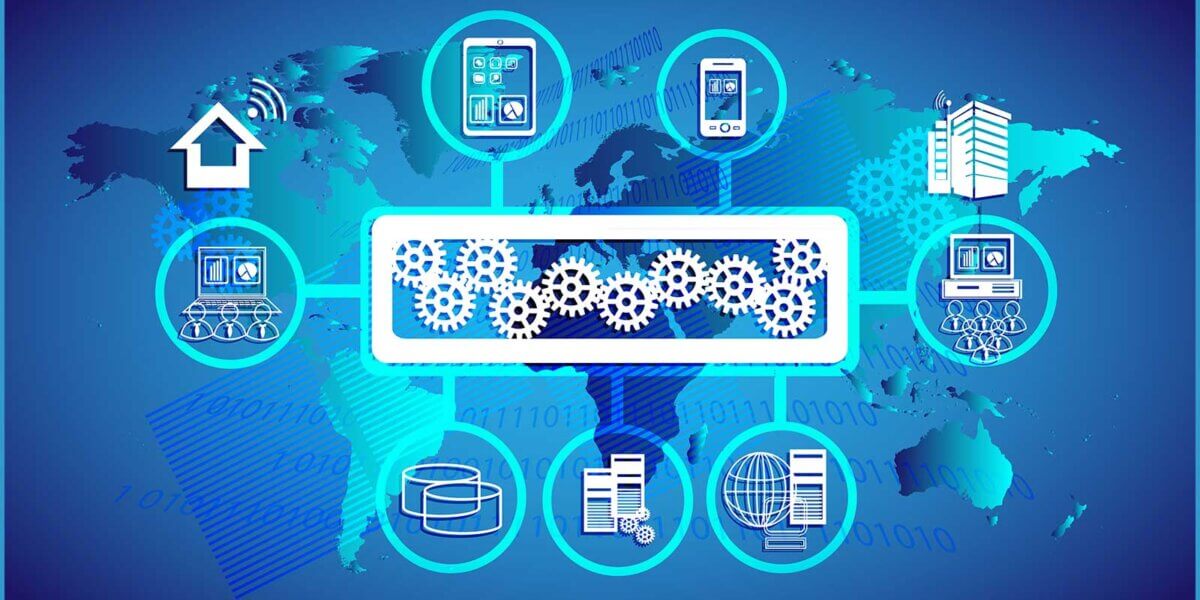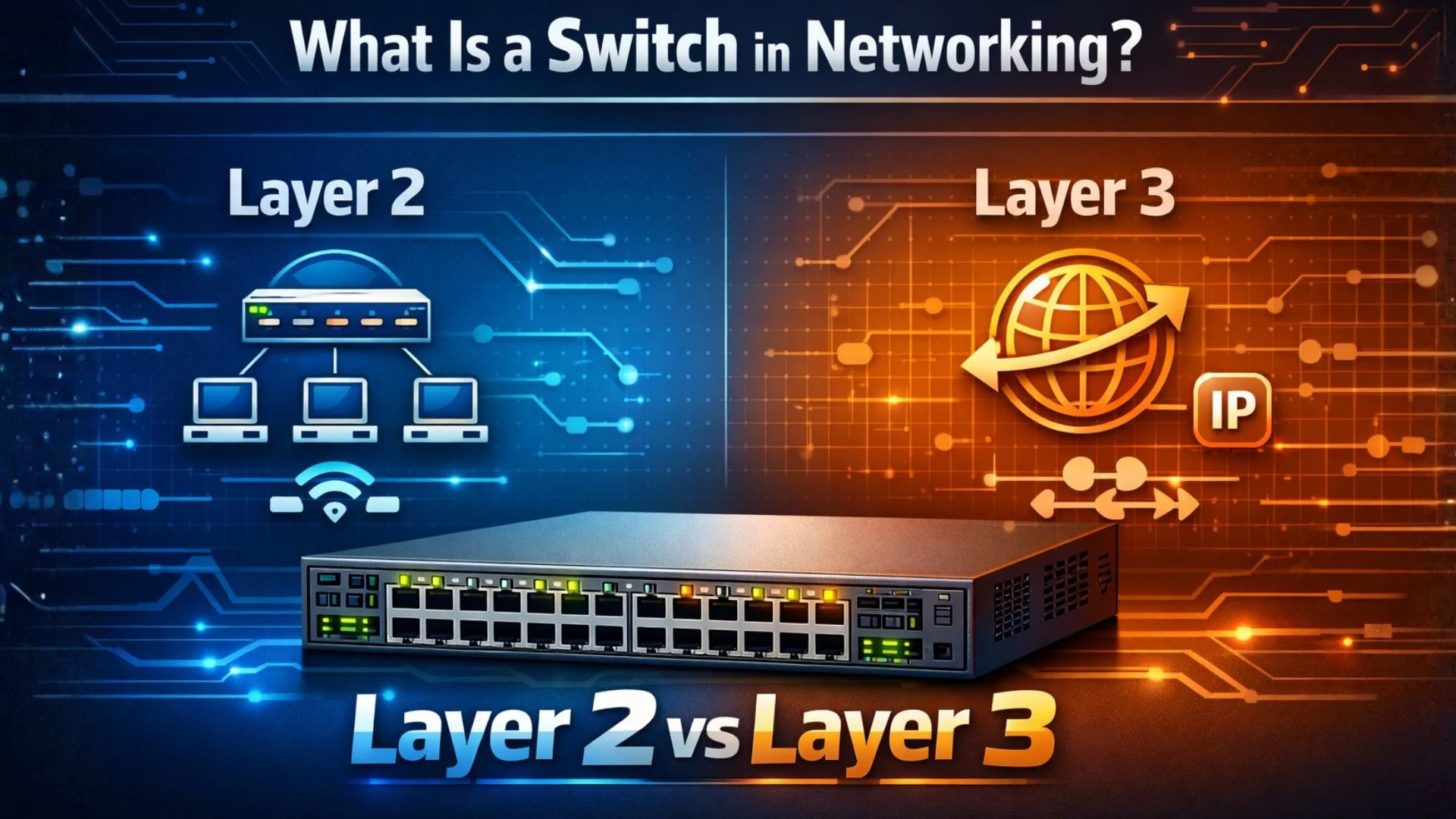
Whether you are a student exploring to gain knowledge, an expert professional, or just someone curious to know about MPLS, this is the right place for you. In this article, we will explore the world of networking. We will also look at the answers to the questions such as What is MPLS in networking and how does it work, what are the uses of MPLS, its benefits as well as its drawbacks? So, let’s just get going.
MPLS in Networking
In the world of networking, Multiprotocol Label Switching (MPLS) is a flexible and effective method for sending data securely between two or more sites. By assigning labels to data packets, MPLS allows traffic direction beyond IP addresses by helping routers identify the most suitable transmission path. This technology operates at layer 2.5 of the OSI model, combining elements of traditional routing and switching.
- MPLS full form in networking – Multiprotocol Label Switching
How does MPLS Work?
By adding labels to data packets, routers can use MPLS to allow data to travel along already-defined pathways across the network. The data that is entering the router gives each packet that joins the network a distinct label based on where it is going. These labels are used to quickly direct the data along the simplest and most effective route as the packet moves through successive routers. The packet is sent to its intended destination when the label is removed at the leaving data router. This effective approach reduces delay and improves network performance overall.
Uses Of MPLS In Networking
MPLS is used to improve speed and performance in computer networks. Here are its uses:
- Fast Routes: MPLS finds the internet’s fastest routes for the transfer of data. It speeds up data packet’s journey to their destination, similar to what GPS does for them.
- Traffic Control: MPLS helps in the management of internet traffic, similar to traffic lights. It prevents them from being delayed behind slower data.
- Improved Quality: MPLS makes sure important things, like conversations or videos, continue to flow smoothly. It’s similar to providing specific data with VIP treatment so they don’t get interrupted or delayed.
- Safe Connections: MPLS provides safe connections between various locations, such as residences or workplaces. It works similarly to a hidden internet tunnel to protect your data from unwanted access.
- Managing Large Crowds: MPLS keeps things flowing and organized as a large number of people use the internet.
- Keeping Things Separate: MPLS makes sure that different kinds of internet traffic stay in their own lanes.
Helping Online Companies: MPLS helps online businesses to provide customers with improved services. In addition to providing useful features like safe connections and smooth video streaming, it helps in managing the network.
Benefits of MPLS
MPLS (Multiprotocol Label Switching) is a dynamic networking technology that offers various benefits for businesses and organizations. Some of the benefits are:
- Multiprotocol label switching allows for a reduced delay as well as quicker transfer of data rates. It gives priority to important traffic, by offering the best routes. It can also benefit us with its advanced network performance.
- MPLS has made it easier for businesses to scale their network as the business expands or grows. It is possible to distribute bandwidth constantly in response to shifting network demands. Adding new locations or services is made simpler and it doesn’t affect network performance.
- A private and secure network environment is provided by MPLS. It also provides a defense against online attacks. MPLS also helps in protecting information.
- MPLS lowers costs for operation and improves network management. It removes the requirement for costly hardware. Using MPLS to bring together the networks you have can help you reduce costs.
- Bandwidth management and traffic prioritization have been made possible by MPLS. It guarantees the delivery of outstanding services for essential applications. You can also ensure that your clients will have a dependable user experience with MPLS.
For companies trying to maximize their networking facilities MPLS has a lot to offer. MPLS is a useful tool for modern companies, offering benefits including cost reductions, secure data transmission, and improved performance and scalability. Consider installing MPLS in your network so you can also get these benefits. You can just simply start having MPLS advantages by installing it.
Drawbacks of MPLS
- Setting up and maintaining an MPLS network can be expensive, especially for smaller businesses with limited budgets. It is not budget-friendly for all the users.
- Without specialized knowledge and experience, setting up and maintaining an MPLS network can be difficult for businesses without dedicated IT staff.
- Changing MPLS providers after a company commits to one MPLS provider can be expensive and time-consuming, which may reduce flexibility.
Conclusion
A successful networking technology that provides many advantages, such as improved performance, security, and flexibility, is multiprotocol label switching, or MPLS. To decide which MPLS is the best option for their particular requirements, organizations must, nevertheless, balance the benefits against the drawbacks. By understanding the various MPLS functionality and possible uses, businesses can make well-informed decisions to improve their network infrastructure.
Frequently Asked Questions (FAQs)
Where is MPLS used?
MPLS can be used in several environments, such as telecom networks, Internet Service Providers, and companies. Organizations with multiple locations that require trustworthy and fast connections may find it very useful.
Is MPLS a secure protocol?
Although MPLS doesn’t offer privacy by itself, it can be combined with additional security measures to create safe connections, such as VPNs. This protects data during transfer from unwanted access.
What are the business benefits of MPLS?
MPLS helps businesses prioritize essential traffic, maintain trustworthy connections between many sites, and improve network performance. Additionally, it improves security when sending sensitive information.
Is MPLS adaptable?
MPLS is adaptable and is capable of managing high network traffic volumes. The way it is designed allows it to change with the demands of the network with no loss of safety or performance.







0 Comments